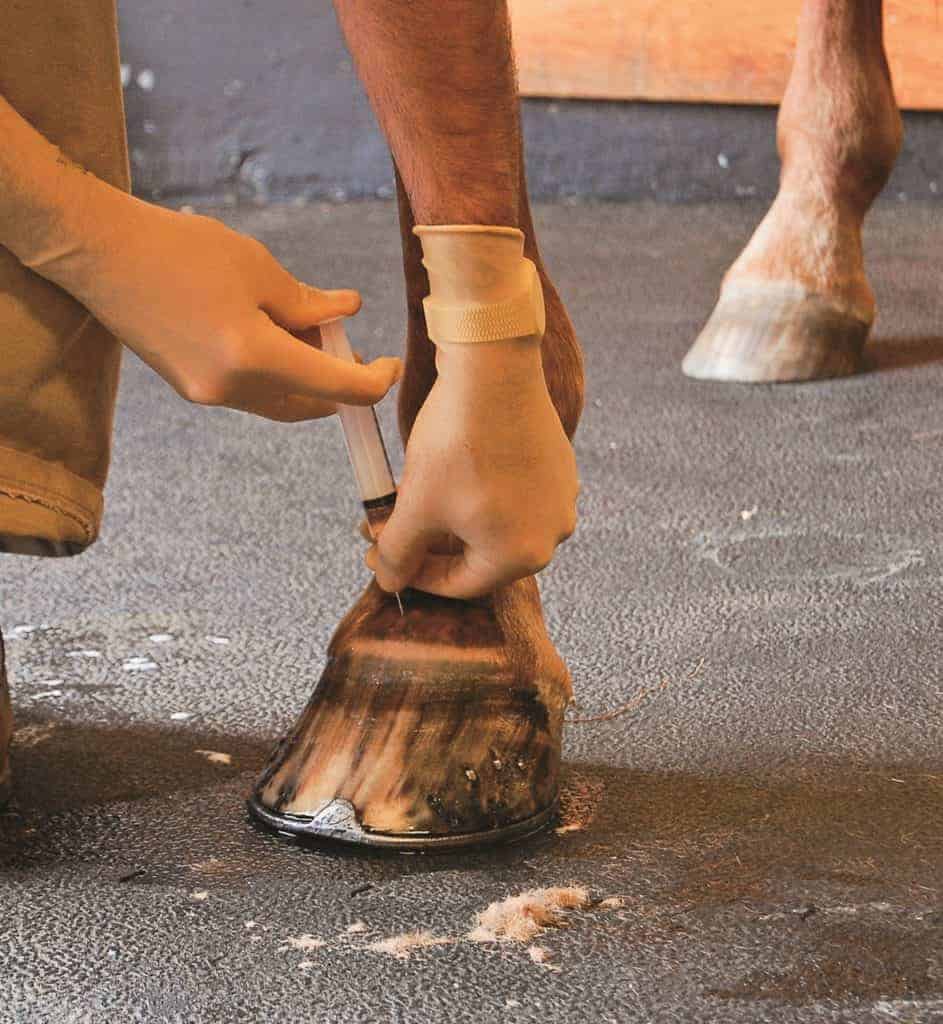
Equine Meniscal Injuries
Equine meniscal injuries can cause severe pain and lameness, but if diagnosed and treated properly many horses can return to work.

Equine meniscal injuries can cause severe pain and lameness, but if diagnosed and treated properly many horses can return to work.

While prohibited in competition horses, this anabolic steroid might help vets manage joint disease such as osteochondrosis lesions in young horses.

Conventional and easy-to-use joint therapies such as corticosteroids and hyaluronic acid continue to have their place in equine practice.

Veterinarians might consider addressing axial skeleton adaptations when rehabbing horses with limb injuries.

A veterinarian describes some subtle signs to watch for that might point toward your horse having joint discomfort.

Find out how to keep your horse’s joints feeling and moving their best in our podcast. Sponsored by Boehringer Ingelheim.

Find out how to get athletic horses with injuries to the large, complex stifle joint on the road to recovery.

Controlled exercise, as discussed with your veterinarian, can be part of a successful rehabilitation program.

Researchers are redefining the muscular diseases long called “tying-up.” While they seem similar, the causes are different, and each requires specific management.

Reduce sporadic episodes of exertional rhabdomyolysis by providing plenty of forage and meeting these unique equine athletes’ nutrient requirements.

Researchers injected horses’ injured joints with a combination of hyaluronan, sodium chondroitin sulfate, and N-acetyl-d-glucosamine (HCSG).

Regenerative medicine is giving us new options for treating horses with joint disease and other injuries. Learn more and get your questions answered during the live recording of our podcast. Sponsored by Zoetis.

One researcher assessed the impact of environment and antibiotic administration on synovial sepsis rate.

Biologics offer an alternative to steroid joint injections for horses with osteoarthritis. Learn how they are derived and work in our veterinarian-approved visual guide. Sponsored by Zoetis.

Veterinarians share their thoughts on stem cells, IRAP, and platelet-rich plasma.

A survey found most veterinarians who specialize in horses and primarily deal with lameness issues use nonsteroidal intra-articular joint therapies in their patients.
Stay on top of the most recent Horse Health news with
"*" indicates required fields